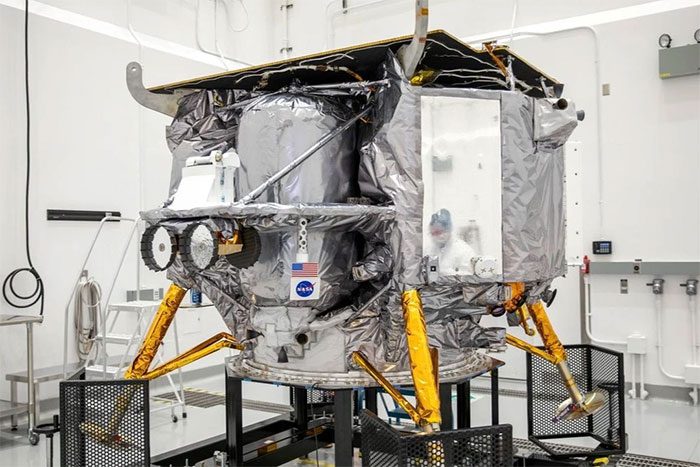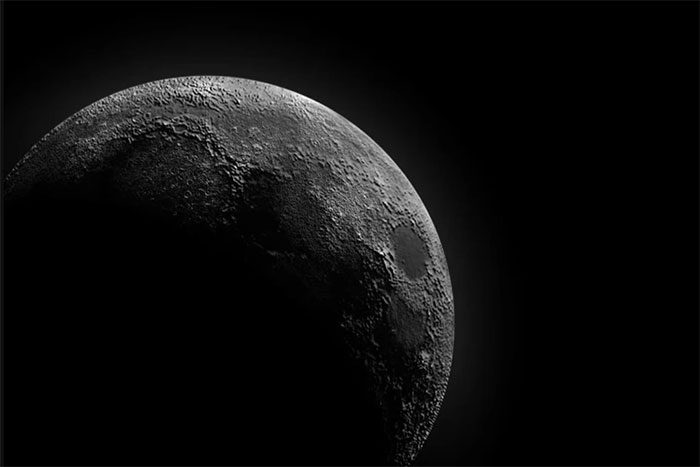A spacecraft carrying scientific instruments, technological equipment, and Bitcoin is set to launch on January 8, with a planned landing on the Moon two months later.
Astrobotic, based in Pittsburgh, is making final preparations to launch the lunar spacecraft on January 8 in close collaboration with NASA. The mission, named Peregrine Mission One, also marks the first launch of the Vulcan Centaur rocket manufactured by United Launch Alliance (ULA).

Various scientific instruments equipped on the Peregrine spacecraft, including a physical Bitcoin. (Photo: Astrobotic).
The Vulcan rocket along with the Peregrine spacecraft is expected to launch from Cape Canaveral Air Force Station in Florida. This is a familiar launch site for NASA and many missions that mark their collaboration.
After launching from Earth, the Vulcan Centaur rocket will carry the spacecraft on a journey of 384,000 kilometers, landing at Gruithuisen Domes, a volcanic region on the Moon. This site has been meticulously selected for its scientific significance.
If successful, this will be the first lunar landing mission conducted by a private company. It will also mark the first landing of a U.S. spacecraft on the Earth’s satellite since NASA’s Apollo 17 mission in 1972.
Bringing Modern Technology to the Moon
NASA plans to carry several new generation analytical devices and technologies aboard the spacecraft, including the Near-Infrared Volatile Spectrometer System (NIRVSS) and the Neutron Spectrometer System (NSS). These two devices are designed to identify the presence of water on the lunar surface.
Additionally, Laser Retroreflector Arrays (LRA) will provide extremely precise measurements of the distance between the Moon and Earth, while the Linear Energy Transfer Spectrometer (LETS) will assess lunar surface radiation to enhance the safety of future astronauts.

The Moon will be a top destination for space missions in 2024. (Photo: Space).
Similarly to LETS, the M-42 Radiation Detector from Germany installed on the spacecraft will analyze potential hazards for similar missions, while the Colmena robot from Mexico will deploy and assemble to form a solar panel.
Not to be overlooked is the small Iris Lunar lander, designed by students from Carnegie Mellon University. Remarkably, this could be the first American robot to set foot on the Moon if everything goes according to plan.
Despite criticism from some scientists, one physical Bitcoin will also be included in the Vulcan’s payload, to be taken to the Moon.
According to Bitmex, this is a coded Bitcoin and is included in the mission for future explorers to recover, along with other cryptocurrencies.
Numerous Challenges Ahead

Logo of Peregrine Mission One. (Image credit: Astrobotic).
Despite its significant implications in the space race, the Peregrine Mission One faces numerous challenges, as history shows that only about half of the lunar missions have succeeded.
NASA’s acknowledgment of the potential risks and acceptance that some missions may not succeed highlights the complexity and uncertainty of space exploration, as noted by Chris Culbert, program manager for CLPS.
“The journey of space exploration is really difficult,” said John Thornton, CEO of Astrobotic. “You really have to love it to be in this game. You also need to be lucky.”
“The biggest challenge is probably that we cannot fully test the landing on the Moon in the same way we can on Earth,” Thornton explained. “That’s because the Moon’s gravity is only 1/6 that of Earth, and it’s a vacuum environment.”
“Failures will happen at some point,” the Astrobotic CEO admitted. However, he believes that failure in a space mission does not equate to a failure of the program. Instead, they represent opportunities to learn and improve.
“We have benefited greatly from what we have learned, and we will just keep learning from here on out. That is the most important meaning we want to emphasize if you have a bad start day.”
Regarding the choice of Peregrine as the mission name, the Astrobotic CEO stated that his team liked the imagery of the Peregrine falcon. “This is the fastest bird, and it fits our direction: You have to fly very fast to the Moon, then slow down quite a bit to land.”


















































